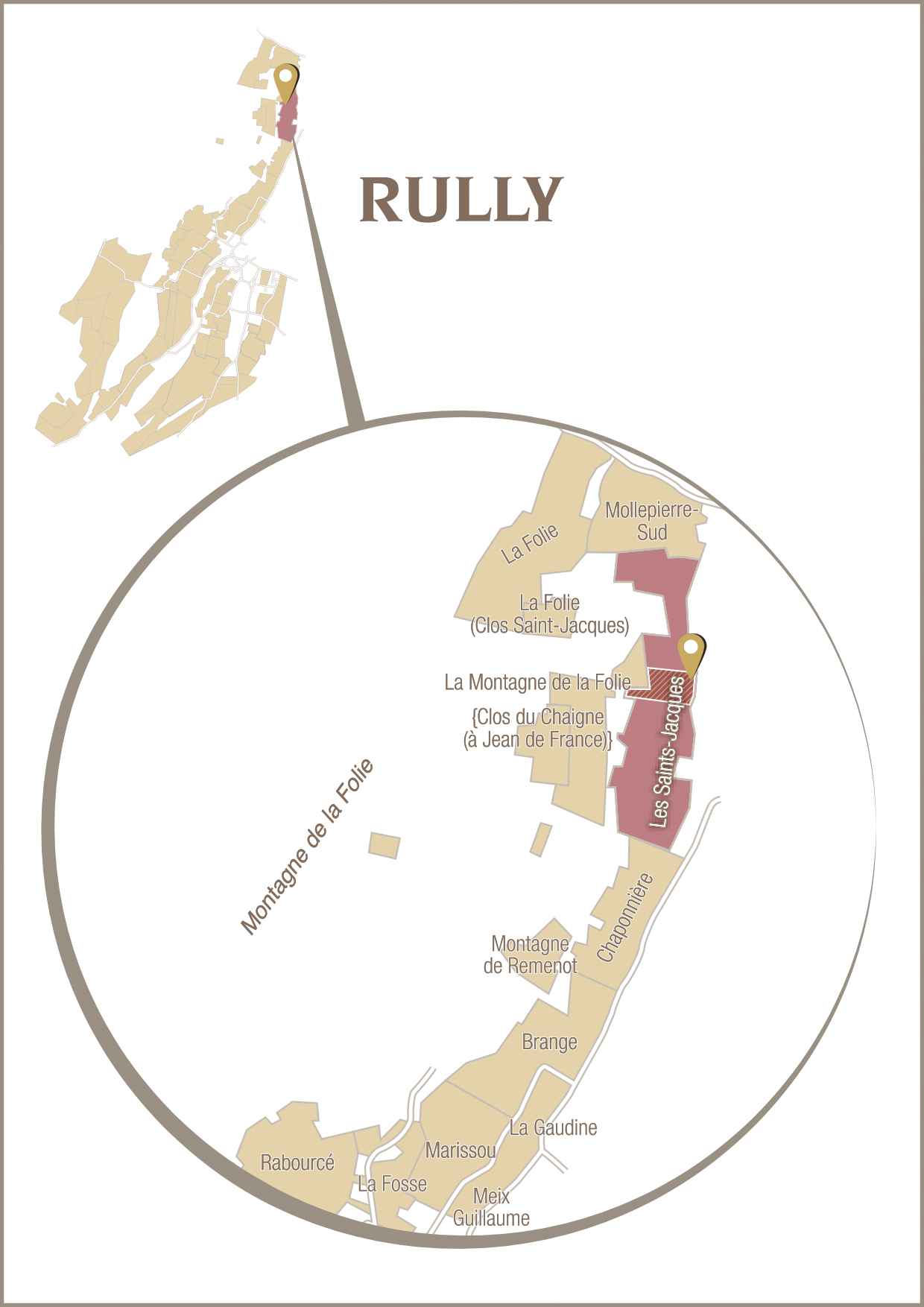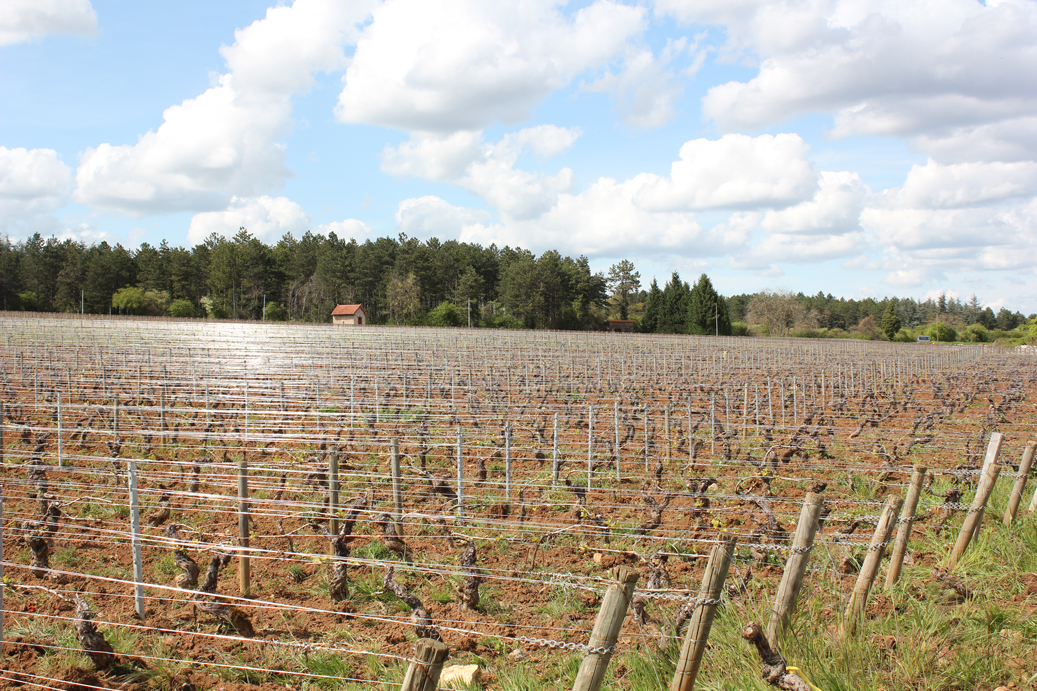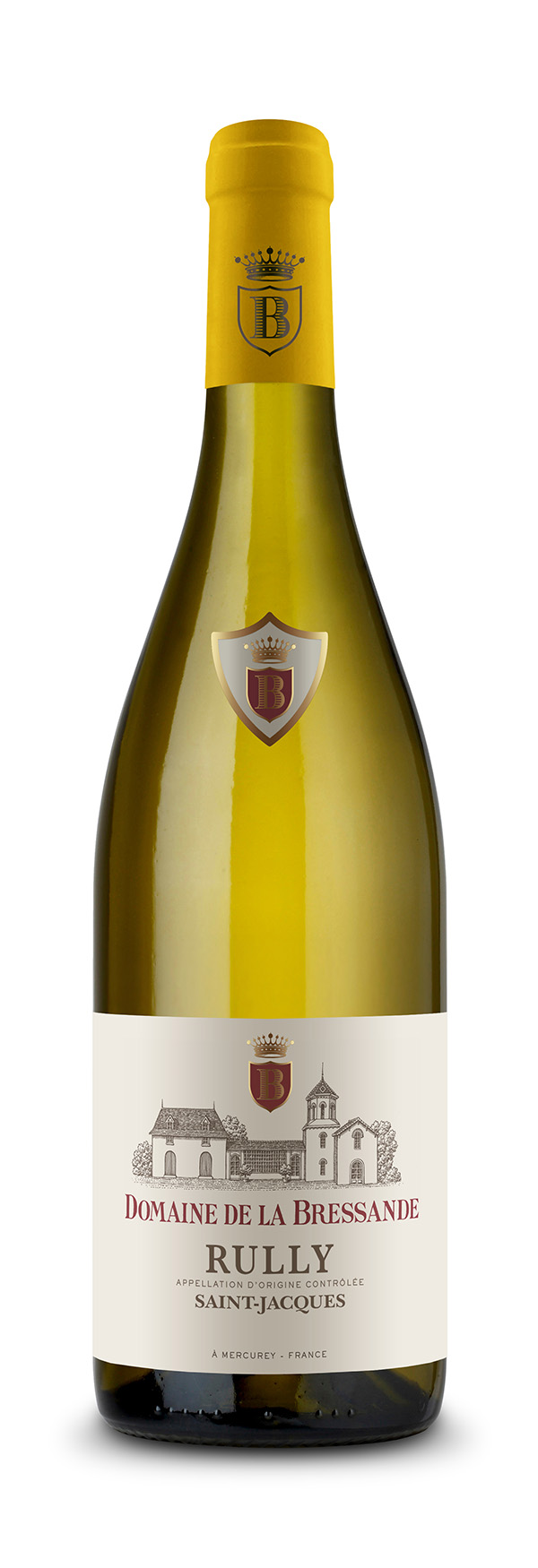RULLY
SAINT-JACQUES 2020
Grape Variety
100% Chardonnay.
Tasting notes
Colour: Bright golden yellow.
Nose: Aromas of white and yellow fruits such as pear and pineapple, interspersed with delicate woody notes.
Palate: An ample, generous wine, held together by a strong minerality.
Food and wine pairing
Very pleasant on its own, as an aperitif, it will also go well with white meats and fish in sauce. Also to be discovered with spicy cuisine or cheese.
Serving suggestions
Serve ideally at around 14° C. (57°F).
Ageing potential
It will easily age for 5 years in the cellar, in good conditions.
Origin
The Rully appellation is a village appellation with 23 climats classified as Premiers Crus (i.e. 30% of the vineyard area). 246 ha are devoted to white wines (including 69 ha of Premiers Crus) and 121 ha to reds (28 ha of Premiers Crus).
Domaine de la Bressande stretches across the villages of Mercurey and Rully, with 9.20 hectares in Rully Village and Rully Premier Cru.
The “Saint-Jacques” parcel covers 1.5 hectares under the Rully Village appellation, and its name is thought to come from an old pilgrimage route used by those travelling to Compostela.
Terroir
- Vineyard area: 1,5 ha
- Vines age: 30 years
- Soil: Silty-calcereous
Vinification and maturing
The grapes for our Rully white ‘Saint-Jacques’ are pressed directly on arrival at the winery before cold settling between 16 and 24 hours, the aim being to eliminate the coarse lees (solid particles from the skins, stems, skins and impurities that settle by sedimentation).
Alcoholic fermentation took place in temperature-controlled stainless steel vats to ensure precise temperature control and homogeneity of the cuvée before racking at the end of fermentation.
The wine was matured in these barrels (25% of which were new) on fine lees for 9 months, with occasional stirring of the lees (around twice a month) until malolactic fermentation, in order to develop complex aromas and retain the purity of the fruit, and to protect the wine from oxidation (barrel walls and bung holes) and reduction (accumulation of deposits, sometimes sulphurous, in the bottom of the barrel or vat) by re-suspending the fine lees.
Vintage : 2020
"Never in my entire wine career have I seen such variations in the grapes than in the 2020 harvests." said Anne-Laure
It was an early vintage, with another very mild winter and therefore an early start to the growth cycle.
A rainy, cool May did not slow the vines down, and temperatures quickly rose again. The summer was one of the hottest we have experienced.
The vines reacted in very different ways depending on the sector and it was necessary to monitor the grapes’ phenolic maturity right up to the harvests, since in some cases the berries suffered significant water stress, resulting in delays in ripening and lower yields.
On the whole, the vines in Rully, Mercurey and Maranges held up well because several of our terroirs benefit from subterranean water sources which partially alleviated the stress.
But the fact remains that the expression of aromatic, phenolic and technological maturity was very different from previous years and the evolution of each parameter had to be closely monitored. Once again, the choice of harvest date was decisive in ensuring the quality of the future wines. Especially since there were sometimes significant differences in ripeness within the same plot.
Harvesting began on 24 August and ended on 16 September. Some sectors required patience: it was important not to harvest too quickly. The grapes were in an excellent state of health, but thorough sorting was necessary to separate berries that were still pink and yet side by side with ripe grapes.
Ultimately, yields were particularly reduced for the reds.
The character of the 2020 vintage will gradually be revealed as it undergoes barrel-ageing, but we can already appreciate it for its balance, promising colours, concentration and generous aromatic expression.
Awards
Tastevinage - Tasteviné - March 2024
Tastevinage d'automne - Tasteviné - January 2022


